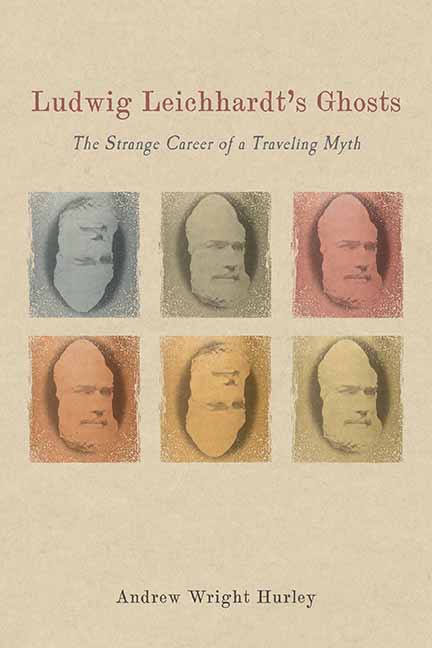Book contents
- Frontmatter
- Dedication
- Contents
- List of Illustrations
- Acknowledgments
- Introduction
- Part I Colonial Entanglements
- 1 Discovering, Mourning, and Honoring Leichhardt between Australia and German-Speaking Europe, 1848–1858
- 2 Ferdinand Mueller, the Ladies Committee, and German-Australian Seekers of Leichhardt
- 3 Taking Leichhardt Home to Germany with Georg Neumayer
- 4 Uneasily Approaching the Centenary
- Part II Colonial Memories
- 5 An Interwar Interregnum, or Finding Leichhardt as a “Friend of the Aborigine”?
- 6 Nazi Leichhardt
- 7 Leichhardt the Cold Warrior
- 8 Leichhardt Explodes, with No End in Sight (including a concluding passage “The Ghost of a Chance”)
- Notes
- Works Cited
- Index
6 - Nazi Leichhardt
Published online by Cambridge University Press: 20 August 2020
- Frontmatter
- Dedication
- Contents
- List of Illustrations
- Acknowledgments
- Introduction
- Part I Colonial Entanglements
- 1 Discovering, Mourning, and Honoring Leichhardt between Australia and German-Speaking Europe, 1848–1858
- 2 Ferdinand Mueller, the Ladies Committee, and German-Australian Seekers of Leichhardt
- 3 Taking Leichhardt Home to Germany with Georg Neumayer
- 4 Uneasily Approaching the Centenary
- Part II Colonial Memories
- 5 An Interwar Interregnum, or Finding Leichhardt as a “Friend of the Aborigine”?
- 6 Nazi Leichhardt
- 7 Leichhardt the Cold Warrior
- 8 Leichhardt Explodes, with No End in Sight (including a concluding passage “The Ghost of a Chance”)
- Notes
- Works Cited
- Index
Summary
WHAT EXACTLY COULD MEMBERS of the Nazi party, an émigré European Jew, a feminist geologist, and the author of a book called Mateship with Birds have in common during the Third Reich (1933–45)? The National Socialist era seems to represent a zenith in Leichhardt's posthumous German fortunes, as he was rediscovered and became a type of minor Nazi icon, like various other colonial-era actors. He moved from being a figure of interest to anthropologists and local historians to making appearances in popular history books, radio plays, and juvenile dime novels, and his “Aryan” name was even used to erase the Slavic nomenclature of his home village, Trebatsch. This period also seems to mark his lowest depths in Australia, especially after the publication of ornithologist Alec Chisholm's highly critical Strange New World (1941), which took pains to eject Leichhardt (again) from the Australian national narrative. This chapter examines the hardening, opposing national accounts of Leichhardt. However, I also complicate any binary “Australian versus German” interpretation in several ways: by noting how, despite the context, the International Republic of Leichhardt could actually persist in some ways; by attending to when “Leichhardt” evaded the ideological strictures of National Socialism; by examining several of Leichhardt's more cosmopolitan Australian defenders during the era, including the biographer Catherine Drummond Cotton, and the German-Australian- Jewish writer Ludwig L. Politzer; and finally by contemplating how Chisholm's reading of Leichhardt inverted the hallmarks of the Nazi interpretation, and hence shared much with it, despite being enlisted in an opposing national project. My analysis also examines how race and gender ran through Leichhardt's legacies in the 1930s and 1940s.
The reasons for Leichhardt's new prominence in the 1930s and 1940s are manifold. In Australia, the sesquicentennial of European settlement in 1938 and the desire, in that context, to undertake what one contemporary called “consolidat[ing] Australian historical remains” resulted in various important finds, like that of John Gilbert's diary from the Port Essington expedition. The anniversary coincided with textual efforts, like Catherine Drummond Cotton's Leichhardt biography, published in the sesquicentennial year. The war also acted as a motor, in a negative sense, for thinking about Germanness, including Leichhardt’s.
- Type
- Chapter
- Information
- Ludwig Leichhardt's GhostsThe Strange Career of a Traveling Myth, pp. 133 - 163Publisher: Boydell & BrewerPrint publication year: 2018



